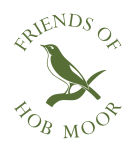Some Notable Dates in Hob Moor’s History
| Medieval, possibly going back before 1066 | Hob Moor is Common Land, used for grazing (cattle & horses, but not sheep) under stewardship of York’s ‘freemen’ – local landowners. During this period, North Lane Pasture and the areas in the west by Our Lady’s and Hob Moor schools are not part of Hob Moor. They are outside the City boundaries and are under the plough, resulting in the wide ridge and furrow still visible today. |
| 1374 | First documentary evidence in the archives – Hob Moor referred to as ‘yhorkesmore’. |
| 1549 – 1550 | Two lodges built on Hob Moor to house plague victims. |
| 1563 | Reference to a water mill ‘mylne called Hobmylne and a close… conteyning by estymacon twoo acres of land.’ Later on, the mill is called Folly Mylne. The ‘two acres’ is very likely to be the area now called the Triangle. |
| 1602 | References to ‘Hoblaine’ (now Hob Lane which runs up to Tadcaster Road). |
| 1604 | Booths on Hob Moor built to house plague victims during an outbreak that killed one third of York’s population. Also the likely date of the ‘plague stone’, which can still be seen by Hob Lane. |
| 1624 | Samuel Parson’s map, showing part of ‘Hobb Moore, Common to Yorke and Houlgate’. |
| 1644 | During the Civil War, Scottish troops are encamped on Hob Moor as part of the Parliamentary Army as it besieges York. |
| 1717 | Hob Stone erected on Hob Lane. |
| 1745 | York – Tadcaster Turnpike constructed. |
| Early 19th Century | Arable farming during the threat from Napoleonic France, resulting in the narrow ridge and furrow across the old common. |
| 1822 | Brickworking on Little Hob Moor. |
| 1824 | North Lane Pasture to the south is incorporated into Hob Moor. |
| 1826 | The Triangle area in the north east incorporated into Hob Moor. |
| 1907 | York City Corporation takes over the ownership and management of Micklegate Stray, which includes Hob Moor. |
| 1909 | The clay pit, created by the North Field Brick Company, starts to fill with water on the area behind where Edmund Wilson baths now are. The pond later becomes known as Kelsey’s Pond. |
| 1912 – 1920 | Cavalry training takes place on Little Hob Moor. |
| 1920 – 1946 | The North Eastern Railway Golf Club establish a 15 hole golf course on Hob Moor (later moving to Pike Hills). |
| 1947 – 1966 | York Rugby League Football Club rents a pitch on Hob Moor. |
| 1954 | The area behind Edmund Wilson baths, including Kelsey’s Pond (now filled in) is incorporated into Hob Moor. |
| 1962 | Edmund Wilson baths built. |
| 1999 | Friends of Hob Moor formed. |
| 2002 | Cycleway and footpath built linking Tadcaster Road with Green Lane and Gale Lane. |
| 2003
2010 |
Hob Moor gains Local Nature Reserve status.
Edmund Wilson baths demolished to be replaced by a supermarket. Hob Moor entered into DEFRA’s Stewardship scheme. |
